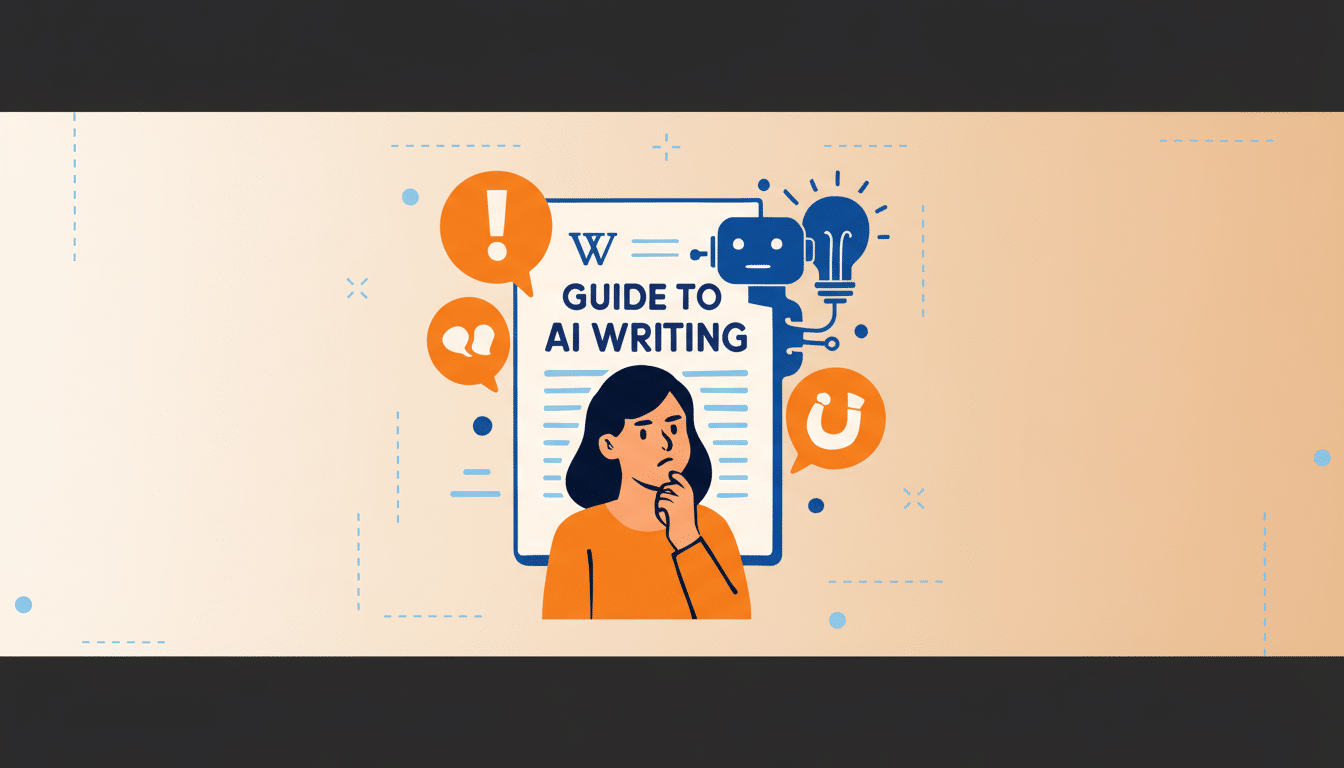Editors who wrestle vandalism for a living may have just produced the most crystalline road map to spotting AI-generated text. A widely circulated guide written by veteran Wikipedia volunteers is emerging as the go-to digital tool for on-the-fly definition of terms like “horns up” and “OK” for teachers, newsroom editors, and platform moderators trying to separate synthetic prose from real prose.
The appeal is obvious. Fake news detection is still a shambles. Wikipedia’s approach reverses the problem: rather than try to analyze the author, it examines writing for patterns that resemble those policed by the site’s rigorous standards of neutrality, sourcing, and notability.

Why Wikipedia’s playbook works for spotting AI text
Wikipedia receives hundreds of thousands of edits a day, offering its editors an unusually rich sample of borderline and bogus suggestions. Now, a community effort that kicked off in 2023, informally called Project AI Cleanup, has turned that experience into an actionable list complemented by examples dredged from the real work of moderation.
The guide’s central insight is that models absorb the tone of the internet at large, not that of an encyclopedia. That mismatch shows up in telltale maneuvers: puffed-up import, marketing sheen, and an overeager nudge toward manufacturing notability. They generalize across models because they are baked into the training data and rewards that push algorithms to spew out agreeable, even upbeat, prose.
What experienced editors flag in AI-generated prose
- First, be wary of grand staging when none is necessary. Model-written passages in this vein tend to begin with a topic identified as “crucial” or, even better, “transformative,” and then lean into that framing with trailing clauses along the lines of “highlighting its ongoing relevance” or “underscoring broader significance.” Human editors don’t write so many words to try to convince you to care; they show you why, with sources.
- Second, check out the biography masquerading as résumé padding. AI text will tabulate minor podcast cameos, local TV snippets, or social-media shoutouts to inflate a subject’s demonstrable importance — precisely the opposite of Wikipedia’s sourcing rules, which privilege independent, high-quality coverage over self-promotional mentions.
- Third, note the ad-copy varnish. The landscapes are always “scenic,” the projects “innovative,” and the venues “state-of-the-art.” The adjectives arrive on cue even when there isn’t much in the way of underlying facts. Editors report this is writing that sounds like it could be used in a commercial transcript, not a neutral summary.
There are style rhythms that sound alarm bells: uniform sentence lengths, repetitive scaffolding (“In addition,” “Moreover,” “Furthermore” in neat succession), overly fluid transitions that never bump into anything. When claims exceed citations — or the citation is to obscure blogs, personal websites, or no-longer-existent sources — it gives editors cause to go looking for machine authors or wholesale fabrication.
Why the current AI detectors still miss too much
Tools offering guarantees of AI detection based on statistical cues such as low perplexity and only a limited amount of burstiness are simple enough for models to evade using paraphrasing or light human editing. OpenAI announced it would kill off its AI text classifier over accuracy problems. Research has also demonstrated high false-positive rates for non-native English writers, creating fairness risks in the classroom and hiring pipelines.
The Wikipedia playbook dodges that trap by analyzing editorial fit. Does the extract comply with the notability policy? Are claims proportionate to sources? Are there promotional signals when not in a neutral reference? Those questions still stand, even as models get better.

How to use the guide outside Wikipedia effectively
And for teachers, it begins with sourcing and proportionality. Have students annotate claims with independent supporting evidence. AI-authored essays tend to overgeneralize, bury the lede, or reference unverifiable pages. (We should have such conversations about whether the work is legitimate scholarly activity in any case; however, we certainly don’t need to force these topics into a cover letter.) Asking for a methodological note of some sort — what was done and why it was chosen — puts more friction between weak, model-shaped drafts.
To editors, just strip away that opening flourish and see if the piece can still hold. Take out sentences that are trumpeting the importance, and what do you have left: dates, bully statements, or an empty crust. Look for made-up details, such as preposterous job titles or awards that have no paper trail. Cross-reference quotes and statistics with sources if any databases or institutional reports are available.
For platforms, the key is to moderate based on behavior rather than buzzwords. Flag drops of submissions that reuse the same promotional flourish, reference poor sources together with excessive ones, or saturate notability with media trivialities. Those signs are harder for models to obscure at scale than any one “AI word list.”
The stakes for the broader integrity of information
The amount of machine-generated text is only rising, from homework and product reviews to political messaging. When dependent on one-click detection, it is easy to both be evaded and cause harm. An editorial lens — of the sort Wikipedia sharpened with unrelenting, public scrutiny — might also provide a sounder path: concentrate on neutrality, verifiability, and balance, and the synthetic flourishes make themselves apparent.
It’s telling that in the past weeks we’ve seen poets, novelists, reporters, and policy analysts all pointing to the same playbook. The most reliable technique for detecting AI writing is to read like a Wikipedia editor: skeptical of hype, hungry for sources, and attentive to the quiet places where style discloses intent.

